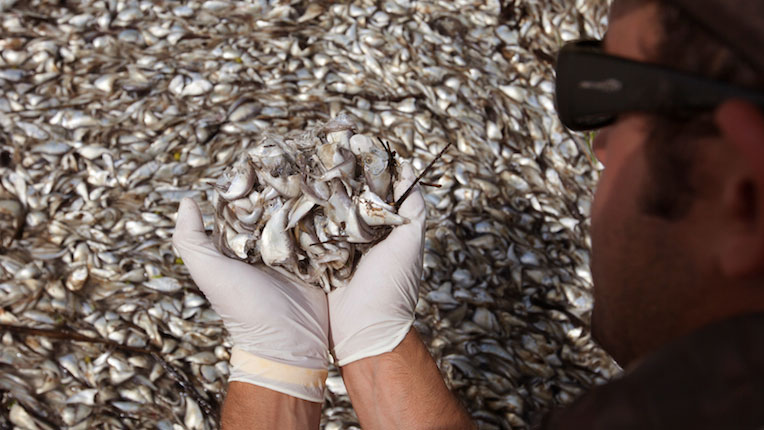Fighting the 'Dead Zone'

A low-oxygen "dead zone" kills or excludes most marine animals over vast areas of the continental shelf. Scientific investigations have shown that such extensive and severe hypoxia is a recent phenomenon, fueled by the increased loads of nutrients carried down the Mississippi and Atchafalaya rivers, largely as a result of fertilizers used to support intense agriculture within the river basin. Phytoplankton bloom thanks to the nutrients, and the process of their decay depletes oxygen over thousands of square miles of seabed. These hypoxic seafloor habitats could become prime candidates for restoration efforts in the aftermath of the Deepwater Horizon disaster.
An existing Action Plan aims to reduce the average extent of the hypoxic zone to less than 5,000 square kilometers (1,930 square miles), or about one-fourth the area affected in 2010, by reducing the discharges of nitrogen and phosphorus into the Gulf. The original target date for achieving this goal was 2015, but implementation has languished. As part of a comprehensive Gulf restoration program, regulations that limit discharges under the Clean Water Act could be more rigorously applied, and federally-authorized conservation programs could be better targeted to achieve greater results.
